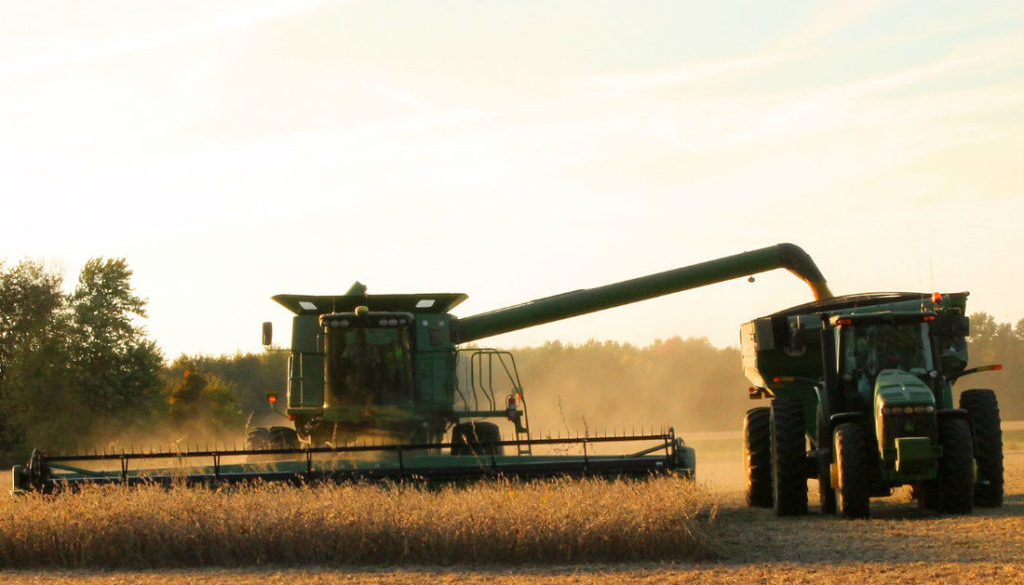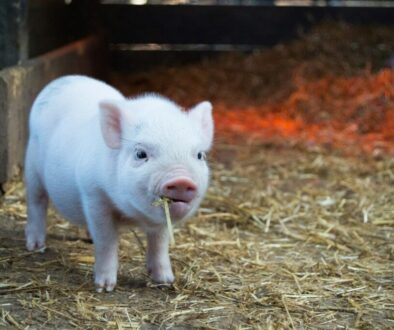How (agriculturally) innovative are rural places?
There are now a number of Government and industry initiatives and funding streams to support agricultural innovation in the UK. This is part of a commitment from Government to create more jobs and promote growth through its Industrial Strategy; as well as a commitment from industry to take ideas ‘from the lab to the market place’ to bring commercial rewards for farmers whilst delivering environmental benefits. What is agricultural innovation and what does it mean for rural places? Jessica Sellick investigates.
Back in July 2013, the Government published ‘A UK Strategy for Agricultural Technologies’. It was the first time the Government, scientists and the food and farming industry had come together to identify and develop the opportunities and strengths of the UK agricultural technologies (agri-tech) sector as a whole. Overseen by the Agri-Tech Leadership Council, and with a budget of some £160 million, the this strategy set out a vision for agri-tech, namely: “That the UK becomes a world leader in agricultural technology, innovation and sustainability; exploits opportunities to develop and adopt new and existing technologies, products and services to increase productivity; and thereby contributes to global food security and international development”. The strategy was intended to unlock a new phase of global leadership in agricultural innovation. As its starting point it identified three strengths vital to supporting growth in the sector: (1) institutes and universities at the forefront of research; (2) innovative and dynamic farmers, food manufacturers and retailers; and (3) accessing global markets through exports of products, science and farming practices. The purpose of the strategy was to harness an infrastructure to support agriculture’s growth. Since then, what have Government and industry done to lead, participate and co-invest in agri-tech? And what does it mean for rural economies and places? I offer three points.
Firstly, Government is investing public funding in building the capacity and capability of the UK agri-tech sector. After the Strategy was published Innovate UK was tasked with improving the translation of research into practice. Innovate UK has put £70 million into an Agri-Tech Catalyst – this is a single funding stream for projects (from laboratory to market place). So far, 120 Agri-Tech Catalyst projects have been supported. These have included projects related to (a) primary crop and livestock production, including aquaculture; (b) non-food uses of crops; (c) food security and nutritional challenges in international development; and (d) challenges in downstream food processing linked to primary production. Individual projects range from harnessing friendly fungi to protect grain from insect pests through to ensuring improved animal welfare for chickens. The current – sixth round – of funding is aimed at projects that will increase the pace and scale of uptake of agricultural innovation by farmers in developing countries. The round closed on 1 February 2017 with decisions expected by 31 March.
Innovate UK has also been tasked with an £80 million fund from Government to establish Centres for Agricultural Innovation to test and develop new agricultural technology and products. There are three new centres: (1) the Centre for Crop Health and Protection (CHAP), a £21.3 million investment to revolutionise how farmers manage crop threats and diseases; (2) Centre for Innovation Excellence in Livestock (CIEL), a £29.1 million investment to create new livestock technology and products to boost productivity; and (3) Agricultural Engineering Precision Innovation Centre (Agri-EPI), a £17.7 million investment in precision agriculture. CHAP and CIEL are headquartered in York at the National Agri-food Innovation Campus at Sand Hutton; whereas Agri-EPI has hubs in Edinburgh, Harper Adams University and Cranfield University. These three new centres are intended to work alongside Agrimetrics, the Government’s first centre for agricultural innovation (a not-for-profit centre that gathers ‘big data’) which was launched in October 2015.
From an industry perspective, agri-tech is about more than Government policy or global factors. Consumers are also important – particularly as they expect quality food produced to high social, environmental and ethical standards. At the interface between the food and farming industry and consumers, retailers have a key role to play in connecting scientists, farmers, producers and manufacturers to the markets they serve. Central to this is a discussion around sustainable intensification: how can we manage farmland to increase farm output and competitiveness whilst protecting the countryside?
Over the last 4-5 years, this Government-industry approach to agri-tech has focused on building new networks and collaborations between all supply chain members to find better ways of producing the food we need and exporting expertise, products and services globally. Following Brexit, this policy approach of seeking to enhance the sustainable productivity of UK agriculture and to put UK farming in a strong position to be internationally competitive is gaining renewed prominence.
For me, the gap that now needs to be filled is around how ideas can be taken ‘from the laboratory to the farm’: how can we build a stronger skills base to attract and retain an agricultural workforce that thinks innovation and applies innovative technologies on farm? How can we ensure the adoption of good practice across farming systems and supply chains rather than innovation being adopted in a fragmented way by individual or small groups of farmers who can see how it will benefit the profitability and sustainability of their farm business? How will this policy backdrop and funding translate existing (and future) research and scientific know-how to the farming community? With this in mind there are already examples of groups of farmers coming together to carry out “on-farm” trials and tests – from Innovative Farmers, to the Farmer Scientist Network and monitor farms.
Secondly, is there a (rural) spatial geography to agri-tech? A blog by Innovate UK on a ‘rural powerhouse’ describes how physical geography (land types) fits into specific clusters. For example: there is an abundance of grade A agricultural land in the East of England, an N8 universities agrifood initiative in the North East, a golden research triangle in the East Midlands aligned to Norwich science park, pasture based livestock production in the West of England and the headquarters of large brands and retailers in Greater London. This builds on existing work by the Centre for Cities and McKinsey & Company for The Gatesby Foundation which identified the most economically significant clusters in the United Kingdom. From “cottonopolis” to “motorsport valley”, the report traces the geographical origins of clusters that have long been part of the British industrial landscape. It identified thirty-one economically significant clusters – from financial services in London to the chemicals industry around Hull. From a geographic perspective, the findings reveal how clusters are evenly spread across the country – and how outside of London, the clusters tend to be attributable to production-led clusters. What is the most appropriate spatial unit(s) within which agri-tech should sit and how can we ensure its geographical emphasis considers rural places more broadly?
Defra’s statistical digest of rural England 2016 presents BIS data on businesses engaged in innovation. This reveals 47% of rural businesses and 49% of urban businesses surveyed between 2010 and 2012 had undertaken innovation activities (e.g. they may have introduced or significantly improved a product, good, service or practice; or were engaged in an innovation project; or undertaking research, development and equipment linked to innovation activities). This suggests that being located in a rural or urban area has little effect on the innovation practices of businesses. However, the percentage of ‘broader innovators’ was found to be lower in rural settlements in a sparse setting compared to those not in a sparse setting. Is this attributable to issues such as remoteness, investment and the application of (urban) policies experienced by some RSN members? How can Government and industry take a territorial approach to agri-tech – a more place-based approach?
Thirdly, and finally, there are discussions around how a focus on agri-tech can unlock broader economic growth in rural areas. On the one hand, this relates to calls for CAP funding and powers post-Brexit to be used to support a strategic farming policy that is better connected to the local economy. ‘Forgotten opportunities’, a report by IPPR North, for example, highlights how Britain’s rural economy contributes 16.6% of GVA. While this is derived from traditional sectors such as agriculture and tourism it also encompasses newer and emerging sectors including agri-tech and energy generation. IPPR North recommends ‘rural devolution deals’ in which Government sets ‘minimum obligations’ which local areas with a substantial rural component must meet – with these relating to food production and sustainability, environmental protection, participation in the Government’s Industrial Strategy and capital spending to support infrastructure and economic development. According to the report, Local and Combined Authorities should work with Local Enterprise Partnerships to demonstrate how they will use devolved budgets to meet their obligations and add value. On the other hand, initiatives are already underway to link the benefits of agri-tech to the wider rural economy. Cheshire East Borough Council, for example, has set up The Skills and Growth Company – with the Council seeking to expand on Cheshire East as a hub for agri-tech, supported by a £50 million capital investment in forestry and farming programmes at Reaseheath College; and following a partnership between the Council and College to pilot a new Food Enterprise Zone (FEZ). How can we ensure rural businesses (of all sizes and sectors) are taken into account by the agri-tech investment?
Much of the policy and practice discussions around agri-tech since 2013 have focused on investment, increasing the uptake of innovative practices and clusters. With the EU Energy and Environment Sub-Committee taking evidence from industry representatives, academics and Government as part of an investigation into the implications of Brexit for UK agriculture and food; and the Environment, Food and Rural Affairs Committee accepting written submissions as part of its inquiry into challenges to the food supply chain from shortages of workers; there are new opportunities to think about agri-tech. How successful has the Government- industry approach to co-investing in agri-tech been since the publication of the Strategy in 2013? What steps need to be taken to ensure that UK farmers are competitive in the global market post-Brexit? And how can we link these steps to the wider rural economy?



